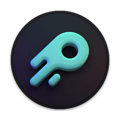With Deep Links, you're able to open Ingage directly into a Presentation - but what if you want to go back to the app you were in?
About Deep Linking
The Ingage Suite provides a number of ways for applications to work together seamlessly. For example, you can connect your CRM application to navigate in to Ingage and then go back to your CRM when you’re done presenting your Ingage presentation. This is enabled using a mechanism known as a deep link.
A deep link is simply an URL. You use URLs all the time when visiting websites on the Internet. https://google.com is an example of an URL (URL is the technical term for an address) and it contains information about how the operating system should access the resource. For example, the https:// in an URL tells the operating system that resource is on a web server and the operating system knows to open these in a web browser. Now that the operating system knows to open a web browser, the next part of the URL tells the web browser where to go - in our example the web browser will go to the page at google.com!
Ingage supports its own URL that you can use to deep link into the Ingage application. An Ingage deep link URL looks something like this:
ingage://applet/xDrtEB
The ingage:// part tells the operating system to open the Ingage application. The applet/xDrtEB part tells Ingage which presentation to present. Here's how to get the Deep Link for your Presentation so you can present your Ingage Presentation right from your CRM!
How to use a Callback URL
You’ll notice that when you finish presenting your presentation you are returned the Ingage Library. What if you wanted to return back to your CRM though? This is where callback urls come into play. A callback url extra text that you add to your Ingage deep link url in a special format. This instructs Ingage to deep link back into the application of your choosing. Here is what an Ingage deep link with a callback url looks like:
ingage://applet/xDrtEB?callback-url=https://mycrm.com/
The callback url is provided as a query string that contains a reference to the location that we’d like the operating system to return us to when we finish presenting. In the example above, by appending ?callback-url=https://mycrm.com to the Ingage deep link, Ingage knows where to send the user when they finish presenting. In this case we will return to a fictional location named https://mycrm.com - as we learned earlier, URLs that begin with https:// will open in a web browser, but if your CRM has its own application that supports deep linking you can specify the deep link URL to your CRM (please contact the vendor of your CRM and ask if they support deep linking).
